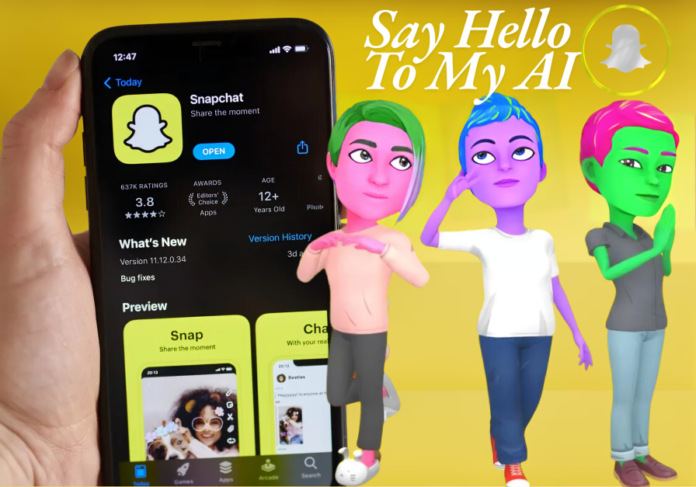In the fast-paced digital landscape, Snapchat My AI Chatbot is quickly becoming a hot topic among teens and their parents. As this feature expands its presence on the popular social media platform, parents are raising concerns about privacy, data security, and the appropriateness of the content delivered to younger users. While AI chatbots offer a novel way to enhance user interaction, they also come with a set of risks that parents need to be aware of.
What is Snapchat My AI Chatbot?
Snapchat My AI Chatbot is an artificial intelligence-driven feature designed to enhance the user experience by offering personalized responses, suggestions, and even entertainment. Initially launched for Snapchat+ subscribers, this AI-powered tool has become available to a broader audience, including younger users, which raises new concerns.
The chatbot uses machine learning to interact with users in real-time, responding to a wide range of queries. From casual conversation to recommendations on local spots or entertainment options, Snapchat My AI is meant to be a smart companion within the app. However, as it learns from user behavior, the chatbot collects vast amounts of personal data, making privacy and security significant issues for parents to consider.
Why Snapchat My AI Chatbot Matters to Parents
With teens making up a large portion of Snapchat’s user base, the introduction of an AI chatbot sparks concerns about what kind of data the system collects and how securely it’s stored. Even more pressing is the risk of the chatbot delivering inappropriate responses or engaging in conversations that may not be suitable for younger audiences.
Privacy Concerns with Snapchat My AI Chatbot
When it comes to online platforms, data privacy is always a top concern, and Snapchat My AI Chatbot is no exception. For the chatbot to function efficiently, it must gather user information, including:
Location Data: My AI may access a user’s geographical location to provide recommendations, such as nearby restaurants or local events.
Behavioral Data: By analyzing past interactions, the chatbot tailors future responses, adapting to the user’s habits and preferences.
While Snapchat asserts that it adheres to strict privacy policies and data encryption practices, the scope of data collection can feel invasive. Parents are particularly worried that children might unknowingly share personal information with the chatbot, which could potentially be accessed or exploited in unforeseen ways.
Potential Data Breaches and Misuse
Despite Snapchat’s assurances about secure data handling, no platform is entirely immune to breaches. Snapchat has had incidents in the past where user data was exposed, making parents justifiably cautious. AI-driven systems, which are constantly learning and evolving, present additional challenges as they rely on vast amounts of data to function.
Moreover, the lack of transparency regarding how Snapchat uses the data collected by My AI is a critical concern. Parents need to understand what information is being gathered and how it will be used. Will it be shared with third-party advertisers? Could it be accessed by hackers?
Inappropriate Content and AI Missteps
One of the most concerning aspects of AI chatbots like Snapchat My AI is their potential to generate or share inappropriate content. While the chatbot is programmed to follow community guidelines and avoid harmful content, no AI system is perfect. In some cases, chatbots have produced inappropriate responses due to the unpredictable nature of machine learning.
For younger users, these missteps can lead to exposure to inappropriate jokes, suggestive content, or even misinformation. AI algorithms learn from their interactions, and if a child unknowingly prompts the chatbot with inappropriate topics, the system may respond in unexpected and undesirable ways.
Safeguards Are in Place, But Not Foolproof
Snapchat has implemented safeguards to reduce the risk of My AI delivering harmful content. For example, it uses filters to screen for profanity and offensive language, and it regularly updates the AI model to ensure compliance with community standards. However, these measures are not perfect, and there is always a risk that something could slip through.
Parents must be mindful that while Snapchat’s safety measures help minimize risks, they are not a replacement for active supervision. Monitoring how children interact with the chatbot and having open discussions about its use are essential steps to ensure safe engagement.
Manipulation and Miscommunication with AI
Another critical concern is how easily AI chatbots can miscommunicate or manipulate information. While Snapchat My AI aims to be helpful, it is not immune to providing incorrect or misleading responses. AI is not always equipped to handle nuanced questions, and younger users may misinterpret its responses as fact.
Children and teenagers, who may not fully understand the limitations of AI, are particularly vulnerable to this kind of misinformation. A seemingly innocent question could result in a vague or incorrect answer, potentially leading to confusion or anxiety.
Reinforcement of Unwanted Behaviors
AI chatbots also learn from user behavior, which means that repeated interactions on specific topics could reinforce undesirable patterns. For instance, if a child continuously asks the chatbot about negative or harmful content, the AI could start tailoring its responses around that theme, creating a feedback loop that parents might not want their child exposed to.
This adaptability can be a double-edged sword: while it makes the chatbot more personalized, it also poses risks if the AI begins to cater to inappropriate or harmful topics based on user input.
Parental Controls and Safety Features
To address these concerns, Snapchat has introduced various parental controls designed to give parents more insight and control over their child’s use of the platform. Snapchat Family Center allows parents to monitor who their children are communicating with and to manage some of the features they have access to, including the AI chatbot.
1. Limiting Access to My AI Chatbot
One of the most effective safety measures parents can take is limiting or blocking access to My AI Chatbot entirely. Snapchat provides the option to disable this feature, but it requires parents to take proactive steps. If you’re concerned about the chatbot’s potential influence on your child, disabling it might be the safest course of action.
2. Educating Children About AI Safety
No amount of parental control can substitute for educating children about online safety. It’s crucial for parents to explain how AI chatbots work, the limitations of these systems, and the importance of being cautious about sharing personal information online. Encouraging children to speak up if they encounter something troubling is an important part of digital parenting.
Having open conversations about technology and its risks will empower children to navigate the digital world responsibly and safely.
Final Thoughts on Snapchat My AI Chatbot
As AI technology continues to integrate into popular apps like Snapchat, parents must stay vigilant about the security concerns these systems introduce. While Snapchat My AI Chatbot offers innovative features, it also raises questions about privacy, safety, and the potential for inappropriate content. By staying informed, utilizing parental controls, and fostering open communication with their children, parents can help mitigate these risks.
How to Handle Children Digital Craving

Screen time addiction is a significant modern challenge, particularly for children, causing a surge in myopia and health issues. Termed “digital craving,” this phenomenon resembles food cravings, reinforcing engagement with devices through dopamine spikes. To combat this, experts recommend designated screen-free areas, screen-free sleep zones, and alternatives like outdoor play, aiming to nurture healthier habits and mental well-being in children.


